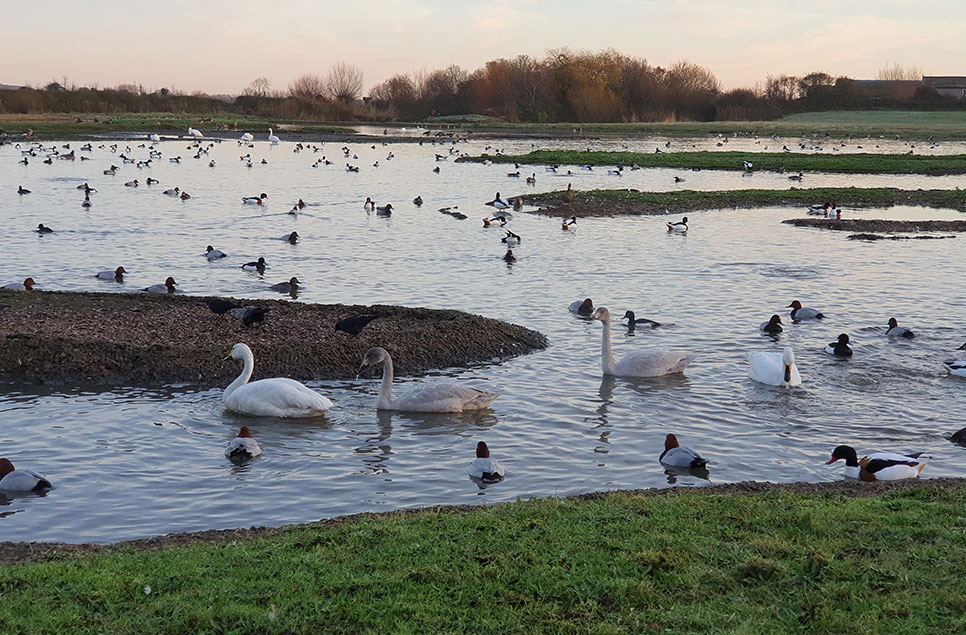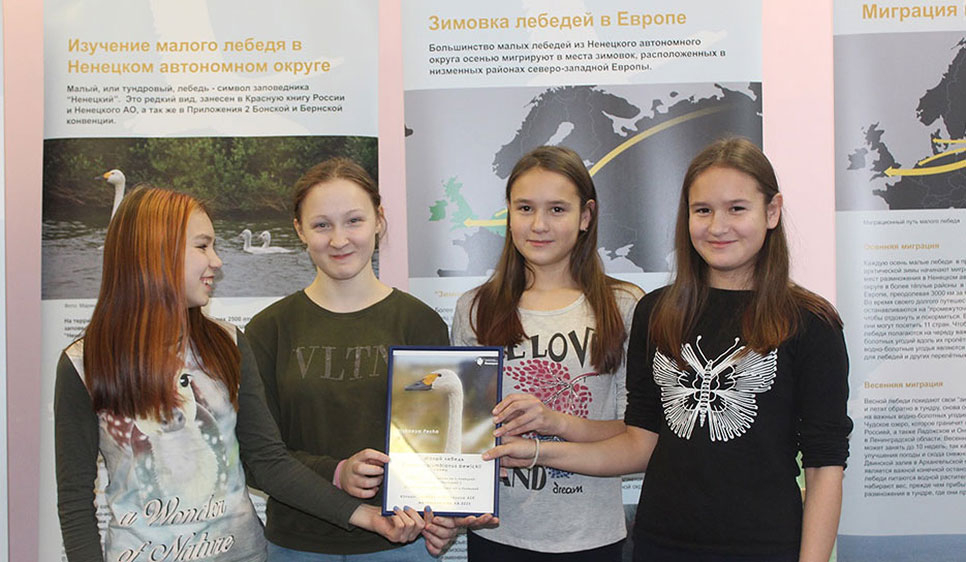Another poor breeding season
A co-ordinated count of adult and juvenile swans across the UK and the continent in mid-December has shown that the Bewick's swans have had another poor breeding season. Only 10.5% of the 7,275 birds aged between 16 and 21 December were youngsters (WWT/W. Tijsen). Although this is slightly better than the proportion of juveniles found in Northwest Europe over the past five winters (8.5%), it's still likely to fall below the annual death rate and contribute to a decline in numbers in the total population. The reasons for fluctuations in breeding success are not entirely clear, although conditions on the breeding grounds in Russia are strongly influential (particularly Spring weather conditions and habitat availability there). The body condition of the birds when they arrive at breeding grounds is also important.
 The Bewick's swan is of particular conservation concern as a steep decline in numbers has taken place since the mid-1990s (Beekman 1997, Delany et al. 1999, Delany & Scott 2006, Wetlands International 2008). The population wintering in Northwest Europe is thought to be sensitive to the impacts of climate and land-use changes, illegal shooting, chemical pollution and infectious disease. A number of factors are likely to contribute to the decline or fluctuation of the population (through fluctuations in annual breeding success and death rates), and these are currently being explored as a matter of urgency in a collaborative study with international colleagues.
The Bewick's swan is of particular conservation concern as a steep decline in numbers has taken place since the mid-1990s (Beekman 1997, Delany et al. 1999, Delany & Scott 2006, Wetlands International 2008). The population wintering in Northwest Europe is thought to be sensitive to the impacts of climate and land-use changes, illegal shooting, chemical pollution and infectious disease. A number of factors are likely to contribute to the decline or fluctuation of the population (through fluctuations in annual breeding success and death rates), and these are currently being explored as a matter of urgency in a collaborative study with international colleagues.



